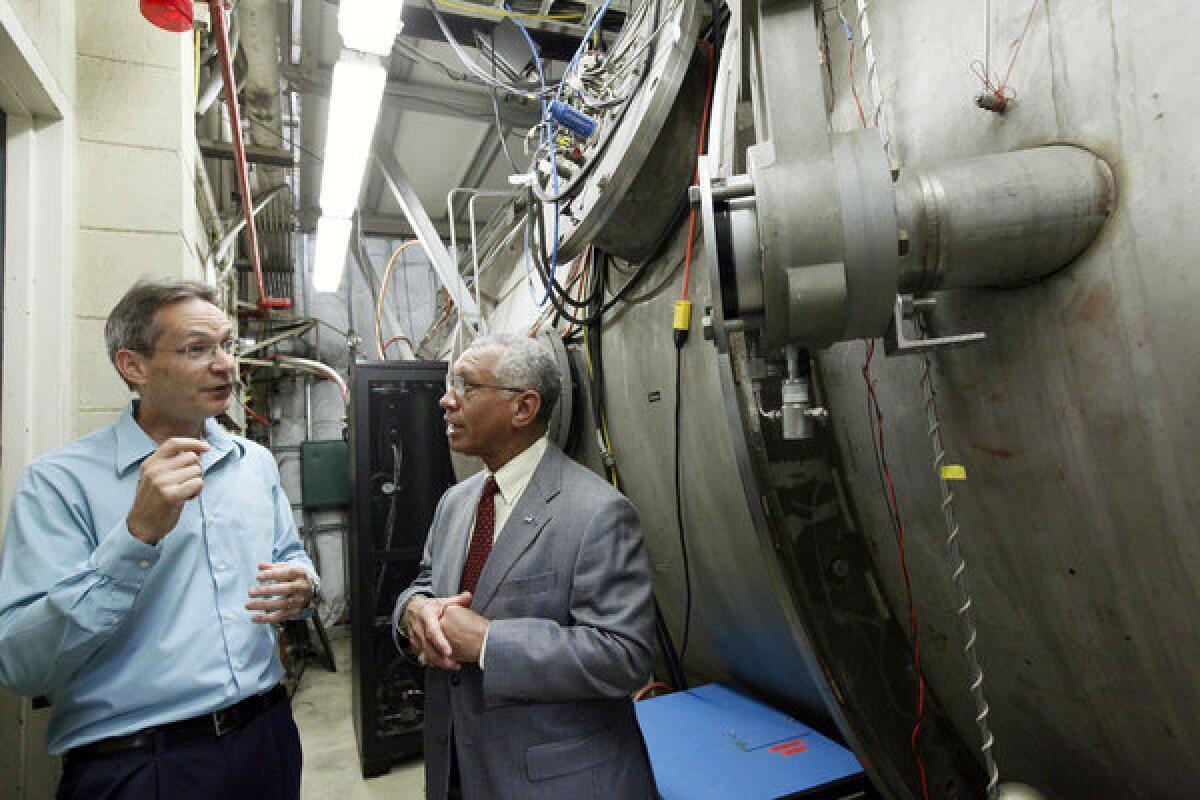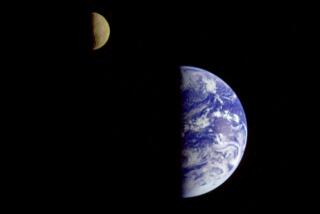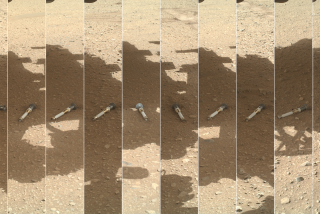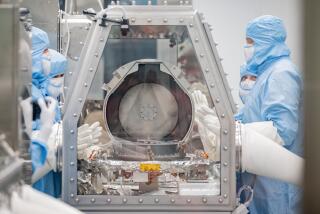Asteroid capture: NASA plans to drag space rock into lunar orbit

NASA Administrator Charles Bolden dropped by JPL on Thursday to outline the agencyâs plans to capture an asteroid, and to look at a model of a powerful new ion thruster that has enough strength to drag a space rock into orbit around the moon.
NASA unveiled a multistep plan to rendezvous with a smallish asteroid, put it in what looks like a giant reflective garbage bag, and bring it into lunar orbit, earlier this year.
Once the space rock is in a stable orbit around the moon, astronauts could land on it and bring small chunks of it back to Earth.
âThis is the first chance humanity has to demonstrate with an asteroid of this size that we can move its orbit,â Bolden said. âIt will be tens of years before we can say we can protect the Earth from an impact. It wonât happen in my lifetime as administrator, but this is the first step.â
In order for the asteroid capture to work, scientists will have to find exactly the right space rock. Theyâd like it to be between 20 and 30 feet in length, moving at the relatively slow pace (for an asteroid) of 1.5 miles per second, and in an orbit that will take it close to the Earth and moon in the early 2020s.
NASA scientists originally envisioned sending a large spacecraft to the asteroid belt that lies between Mars and Jupiter and plucking an asteroid from there, Bolden said. But with NASAâs budget flattening out, and President Obamaâs challenge to land a person on an asteroid by 2025, the agency had to come up with a less costly strategy.
âThe new plan is an ingenious alternative,â he said. âIf we canât get to the asteroid, weâll wait for the asteroid to fly by us.â
While such a mission could help scientists better understand asteroids, or at least the particular asteroid that gets bagged, Bolden said the primary purpose of grabbing and moving an asteroid is to help develop the technologies that would be required to send people to Mars.
âMy ultimate goal as a human being is to get us to Mars,â he said.







